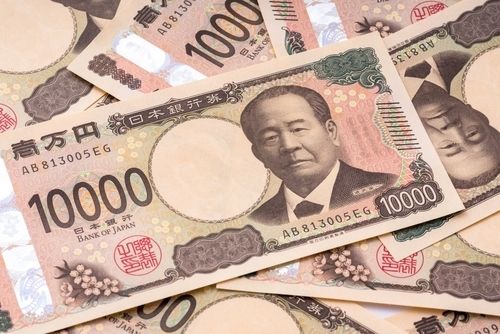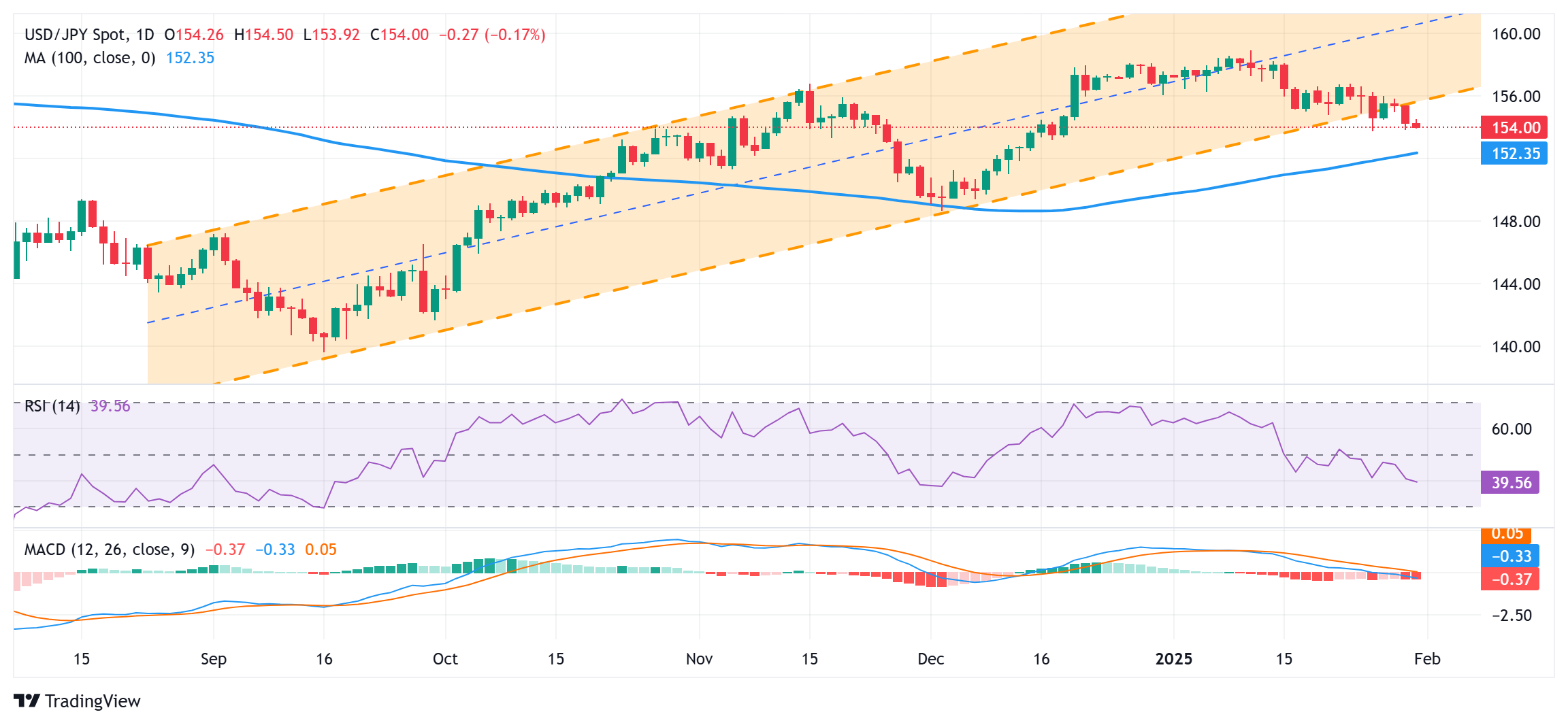
The Japanese Yen continues to be underpinned by bets for additional BoJ rate hikes.
Geopolitical risk and trade war fears also benefit the JPY’s relative safe-haven status.
Trump’s tariff threats cap gains for the JPY and lend some support to the USD/JPY pair.
The Japanese Yen (JPY) attracts buyers for the third straight day on Friday and remains close to over a one-month high touched against its American counterpart earlier this week. Data released earlier today showed that consumer prices in Tokyo – Japan's capital – rose in January.
Moreover, Japanese Industrial Production registered unexpected growth in December and Retail Sales surged past consensus estimates. This keeps alive expectations for further interest rate hikes by the Bank of Japan (BoJ), which, in turn, continues to underpin the JPY.
Apart from this, geopolitical risks turn out to be another factor that benefits the safe-haven JPY, which, along with subdued US Dollar (USD) price action, keeps the USD/JPY pair depressed near the 154.00 mark during the Asian session. That said, a positive tone around the equity markets might hold back traders from placing aggressive bullish bets around the JPY. Moreover, the Federal Reserve's (Fed) hawkish pause on Wednesday and a modest bounce in the US Treasury bond yields act as a tailwind for the USD, lending support to the currency pair.
Japanese Yen draws support from a combination of factors; bulls remain cautious amid Trump’s tariff threats
The Statistics Bureau of Japan reported this Friday that the headline Tokyo Consumer Price Index (CPI) accelerated from 3.0% to 3.4% YoY in January – the highest level since April 2023.
Adding to this, core CPI, which excludes volatile fresh food prices, picked up from the 2.4% seen in December and rose 2.5% YoY during the reported month – representing an 11-month high.
Meanwhile, a core CPI gauge that excludes both fresh food and energy prices remained close to the Bank of Japan's 2% annual target and climbed 1.9% YoY in January from the 1.8% previous.
BoJ Deputy Governor Ryozo Himino reiterated that real rates remain negative and that the central bank would consider more rate increases if economic and price developments align with expectations.
State-run TASS news agency reported, citing the Russian Defense Ministry, that two Russian Tu-95 strategic bombers conducted a routine flight over the Sea of Okhotsk and the Sea of Japan on Thursday.
According to the first estimate published by the US Bureau of Economic Analysis (BEA) on Thursday, the US Gross Domestic Product (GDP) grew at an annual rate of 2.3% in the fourth quarter.
The reading marked a notable slowdown from the 3.1% expansion recorded in the previous quarter and was below the market expectation of 2.6%, though it did little to influence the US Dollar.
US President Donald Trump reiterated his threat to impose 25% tariffs on Mexico and Canada – the top two US trade partners – and warned of potential 100% tariffs if BRICS attempts to replace the USD.
Concerns that Trump's protectionist policies will boost inflation, along with the Federal Reserve's hawkish outlook, provide a modest lift to the US Treasury bond yields, which underpin the buck.
Investors now look forward to the release of the US Personal Consumption Expenditure (PCE) Price Index – the Fed's preferred inflation gauge – for fresh impetus on the last day of the week.
USD/JPY seems vulnerable to slide below monthly low around 153.70; ascending channel breakdown in play
Against the backdrop of the recent breakdown below a short-term ascending trend channel, some follow-through selling below the monthly swing low, around the 153.70 area touched on Monday, will be seen as a key trigger for bearish traders. Moreover, oscillators on the daily chart have been gaining negative traction and are still away from being in the oversold zone. Hence, the subsequent downfall could drag the USD/JPY pair towards the 153.00 round figure en route to the 152.40 area and the 152.00 mark. The latter coincides with the 100-day Simple Moving Average (SMA) and could offer decent support to spot prices.
On the flip side, any attempted recovery above mid-154.00s now seems to confront a stiff barrier near the 155.00 psychological mark. A sustained strength, however, might trigger an intraday short-covering move towards the 155.40-155.45 region en route to the 156.00 round figure and the weekly top, around the 156.25 area. The next relevant hurdle is pegged near the 156.75 region, which if cleared decisively might shift the near-term bias in favor of bullish traders and pave the way for additional gains.
Economic Indicator
Tokyo Consumer Price Index (YoY)
The Tokyo Consumer Price Index (CPI), released by the Statistics Bureau of Japan on a monthly basis, measures the price fluctuation of goods and services purchased by households in the Tokyo region. The index is widely considered as a leading indicator of Japan’s overall CPI as it is published weeks before the nationwide reading. The YoY reading compares prices in the reference month to the same month a year earlier. Generally, a high reading is seen as bullish for the Japanese Yen (JPY), while a low reading is seen as bearish.
* The content presented above, whether from a third party or not, is considered as general advice only. This article should not be construed as containing investment advice, investment recommendations, an offer of or solicitation for any transactions in financial instruments.



